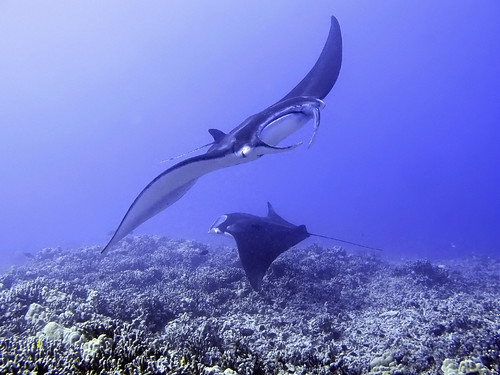
At the 16th Conference of the Parties (CoP) to the Convention on International Trade in Endangered Species of Wild Fauna and Flora (CITES), the European Union, Brazil, Colombia, Costa Rica, Ecuador, Honduras, the USA and several other like-minded countries will be championing proposals to regulate the international trade in five shark species and manta rays.
The meeting is taking place in Bangkok, Thailand and runs from 3-14 March 2013.
Sharks have lived in our oceans for more than 400 million years but populations are in trouble globally. Loss of habitat and increased fishing pressure, often driven by international trade demand, have driven numerous populations to the brink of extinction. With no international catch limits in place for sharks, many populations continue to decline.
The population declines of the five shark species proposed – porbeagle, scalloped hammerhead, great hammerhead, smooth hammerhead, and oceanic whitetip – are of particular concern and driven largely by the high demand for their meat and fins, which are used for food. Scientists estimate 1.3- 2.7 million scalloped and smooth hammerheads and 0.25-1.3 million oceanic whitetip sharks are killed annually to meet the demand for shark fins, an ingredient of shark fin soup.
Populations of manta rays are also at risk because of an increasing demand for their gill plates, which are used in some parts of the world as traditional medicines. "For several decades, we have been increasingly concerned about the overharvest of sharks and manta rays,” said Dr. Maurice Clarke, who will be speaking on behalf of the EU and its Member States at the 16th Conference of the Parties in Bangkok. “We believe that CITES is a valuable tool to address the threats posed by unsustainable global trade in shark fins and other marine species and their parts and products.”
It is because of this concern over the current levels of exploitation that a number of like-minded countries have come together to propose these vulnerable species for listing under Appendix II of CITES. Such a listing is not a trade ban and does not affect the use of a species within national jurisdiction. If approved by a two-thirds vote of CITES member nations international trade would still be permitted, providing it is deemed sustainable and legal.
Sarah Fowler, EU shark expert, said ‘Sharks and manta rays play a crucial role in marine ecosystems and some generate significant dive tourism income for coastal states. The global protection that CITES can offer is hugely important and will complement the limited fishery management measures already adopted regionally. Ultimately, the regulation of trade can help ensure the survival of these incredible animals’.
NOTES
CITES is an international agreement signed by 177 nations designed to control and regulate global trade in certain wild animals and plants that are or may become threatened with extinction due to commercial trade. Approximately 34,000 species currently benefit from CITES protection. Species protected by CITES are included in one of three appendices, which convey varying levels of protection to species listed in each appendix.
Species listing proposals (manta rays and sharks: n° 42, 43, 44 and 46) can be found at http://www.cites.org/eng/cop/16/prop/index.php
Image courtesy of SteveD via Flickr (CC BY 2.0)
